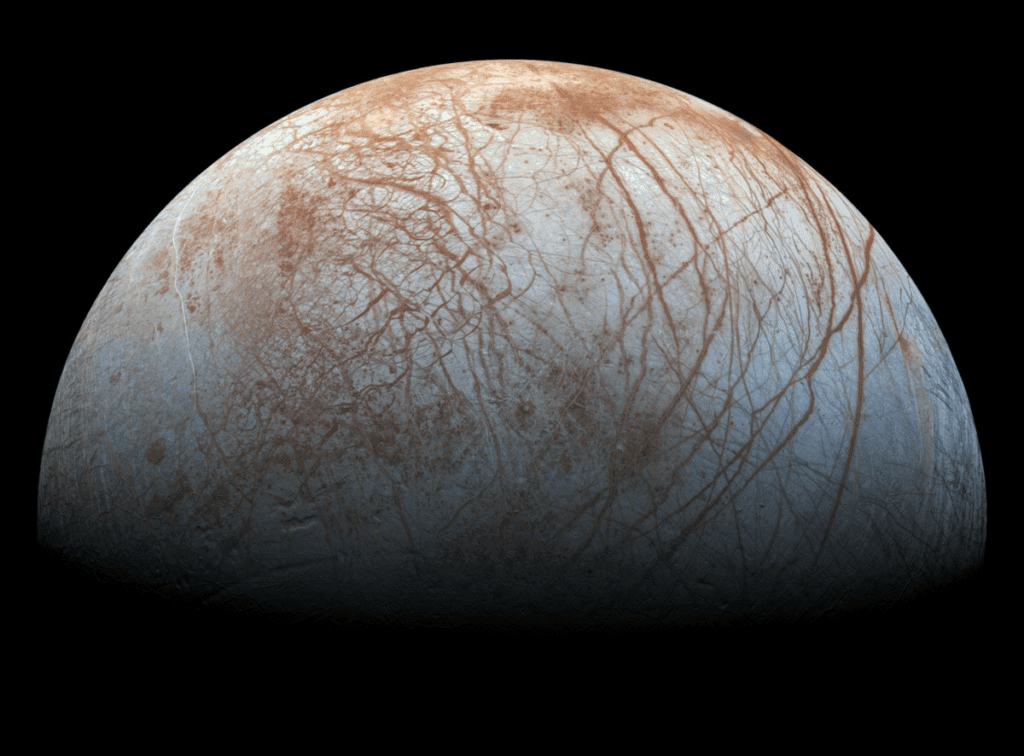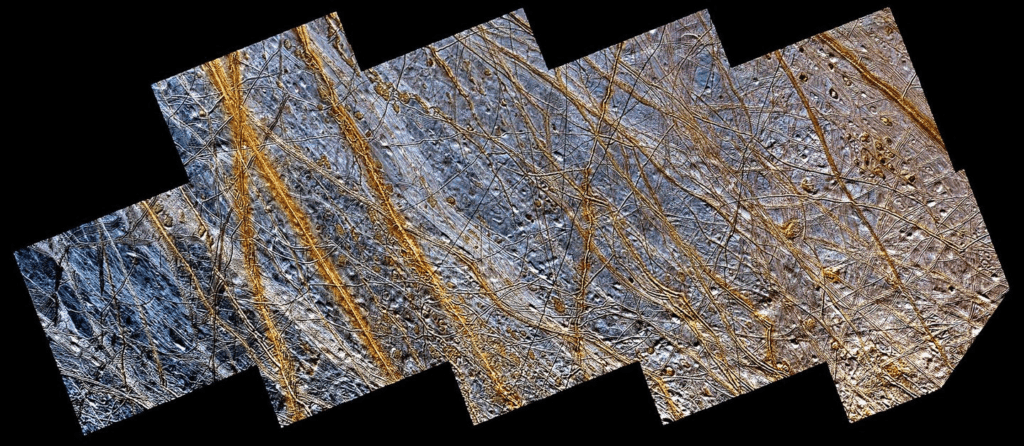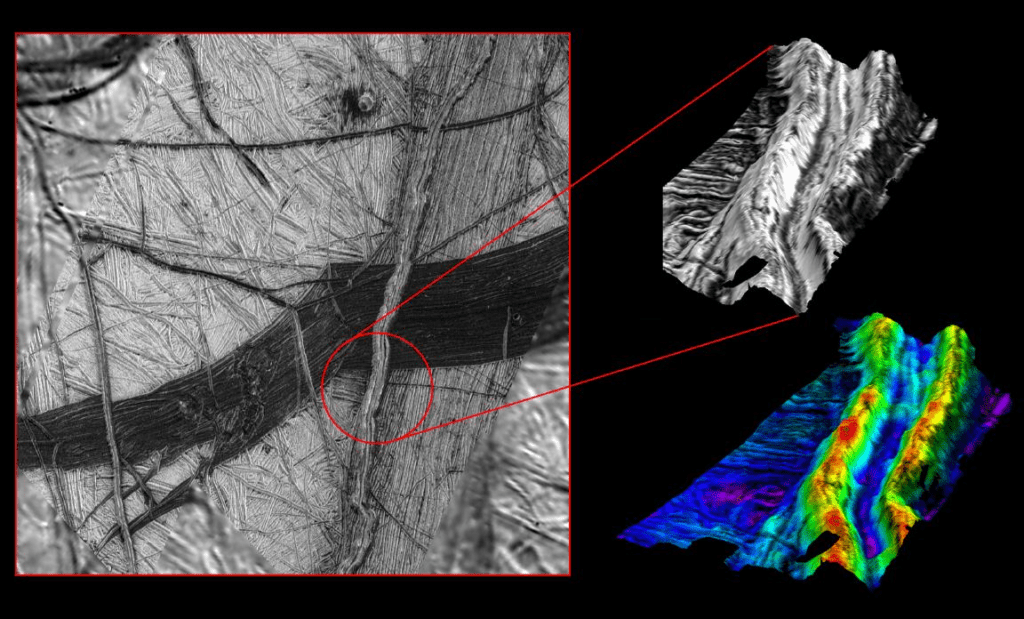For 20 years, researchers have been trying to figure out how double ridges on Europa formed. Now, researchers describe a similar process happening on Earth, in Greenland — which could have major implications for the structure and habitability of Europa.

If you’re looking for life in our solar system (in a place other than the Earth) Europa likely wouldn’t be your first guess. A frigid satellite orbiting a gas giant far away from the Sun doesn’t sound particularly appealing if you’re a lifeform. However, recent research has shown that there’s more to Europa than meets the eye.
Beneath the frozen surface of the satellite, there’s an ocean of liquid water — and while we still have no evidence for life on Europa, the satellite has emerged as one of the most intriguing sites in the solar system for biologists looking for signs of life.
It’ll be a while before we get a mission to Europa to investigate things directly, and in the meantime, understanding the structure of this ice shell and how it evolved geologically is vital for our understanding of the processes taking place on Europa. In a new study, researchers from Stanford led by Riley Culberg investigated a surface landform called a double ridge, and their results suggest liquid water could lie very close to the surface.
From Greenland to Europa

Double ridges are very common on Europa. They’re nearly symmetrical ridge pairs, flanking a shallow through that can be hundreds of kilometers long. They appear in almost every area of Europa, but until now, researchers have struggled to explain how these landforms took shape. But as so often happens in science, chance brought researchers from different areas together.
“It was really a bit of serendipity,” explains Riley Culberg, a geophysicist who studies the near-surface hydrology of ice sheets and glaciers.”One of my colleagues, who is a planetary scientist, was giving a presentation on the big open questions in Europa science and showed a picture of these double ridges on the surface. It struck me that I had seen a similar-looking feature in my own data from Earth while working on a totally different project related to climate change impacts on the Greenland Ice Sheet.”
As it turns out, the double ridges on Europa bear a striking similarity to those in Greenland: they have a similar ratio between the height of the ridges and the distance between the two peaks.

It turns out that double ridges on Europa have a very characteristic ratio between the height of the ridges and the distance between the two peaks, and after accounting for the difference in gravity between Earth and Europa, we found that the Greenland feature has a pretty similar ratio.
To explore this feature in Greenland, the researchers used ice-penetrating radar and surface elevation data, creating several models to help them explain their findings. The results suggest that a succession of fractures and refreezing are responsible for the process. If this is the case, then shallow liquid water is common in the moon’s ice shell, within the first 1-5 km of the shell, Culberg explains.
“Our study reports on our discovery of an icy double ridge on the Greenland Ice Sheet that has a similar geometry to the double ridges found on Jupiter’s icy moon Europa. Our analysis of ice-penetrating radar data shows that the double ridge formed through the refreezing and fracture of a subsurface water pocket within the ice sheet,” Culberg says.
“This was the first time that we were able to watch something similar happen on Earth and actually observe the subsurface processes that led to the formation of the ridges,” the researcher adds.
Good news for Europa’s habitability

Given how prominent these double ridges are on Europa, it’s likely that the processes that created them play a key role in the satellite’s geology. Even as the near-surface processes on Europa and Greenland may be quite different, there are enough similarities to believe that what’s causing the double ridges on Europa is also causing them in Greenland — although the scale of the processes is difficult to estimate, Culberg explains.
“Given what we know about Europa, we think that the types of fundamental physical processes (refreezing, pressurization, and fracture) that we’re suggesting are also reasonable there. But there is still a lot to be done to understand how our proposed ridge formation mechanism scales to Europa and what that might mean for the size and shape of ridges and how long it would take to form them.”
“We think that they would likely have a similar structure to what we saw in Greenland – so a relatively thin subsurface layer of water that, in cross-section, is much wider than the ridge, and extends along the full ridge length in the third dimension. Given that Europa’s ridges are much larger than the one we studied in Greenland, the sills are likely also much larger.”

If the mechanism for the ridge formation translates to Europa, it suggests that these shallow water pockets must have been (and maybe still are) very common in the ice shell. This is broadly consistent with the current understanding of Europa’s ice shell structure.
Perhaps most intriguingly, if water is indeed so close to the surface, it could mean that the presence of life is more likely in Europa’s liquid ocean. Furthermore, it would make it easier for future missions to explore this possibility.
“Primarily, the presence of liquid water in the ice shell would suggest that exchange between the ocean and ice shell is common, which could be important for chemical cycling that would help support life. Shallow water in particular also means that there might be easier targets for future space missions to image or sample that could at least preserve evidence of life, without having to fully access the deep ocean,” Culberg concludes.
The study “Double ridge formation over shallow water sills on Jupiter’s moon Europa” was published in Nature Communications.






